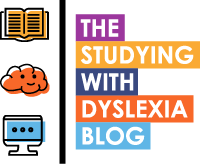Having written a number of articles about how touch-typing can be such a useful tool for many dyslexic learners, I want to share more information that I hope you will find to be compelling in helping your dyslexic learner obtain this essential life skill.
Before I continue, I have to add the caveat that touch typing will not be useful for every dyslexic learner. If decoding and typing is too difficult then there are great tools that can be used to get round that challenge such as speech to text software aka dictation.
For those dyslexic learners who can use a keyboard, there is always scope for improving typing skills and ALWAYS a justification for using typing as an alternative to handwriting within the education environment.
Read this article from i-News: Click here.
I found an article online that explores the importance of touch-typing within the education system and how more schools are training their pupils to touch-type. The article has nothing to do with dyslexia, but this is great news for dyslexic learners. Handwriting can be slow, messy and often brings about anxiety especially when a child has to write lots of text by hand in a short timescale e.g tests and exams. If a child is stressed about how to produce course work or do exams then they will hamper their ability to demonstrate learning.
Touch typing is a way of making the mechanism of writing automatic. A touch-typist doesn’t have to keep looking at the keyboard to type, they deliver their work faster and are more likely to enjoy it. This will be especially true for a dyslexic learner who is able to use a keyboard.
Increasingly, organisations are encouraging touch-typing as this is an essential skill for the workplace. Here in the UK the Ministry of Defence is getting their cadets to learn this skill as a part of their training.
Once at University, dyslexic learners are given free access to touch-type tutors via the Disabled Students Allowance so that they can boost their coursework productivity .
Dyslexic learners are also able to gain a touch typing qualification from City & Guilds too from the age of 14..
Your child may be in a secondary school that doesn’t encourage touch-typing and that is not good. If you feel that this is a useful skill or that your child finds typing useful at home to do their homework, then it is a reasonable adjustment to allow your child to use a laptop in class and type. If you can get your child to type at a rate of 35 to 40 words per minute then this will be so useful to them within and beyond secondary education.
What are your thoughts?
I would really value your thoughts right now on this topic. Please leave a comment below or engage with me on Twitter, letting me know your thoughts.




